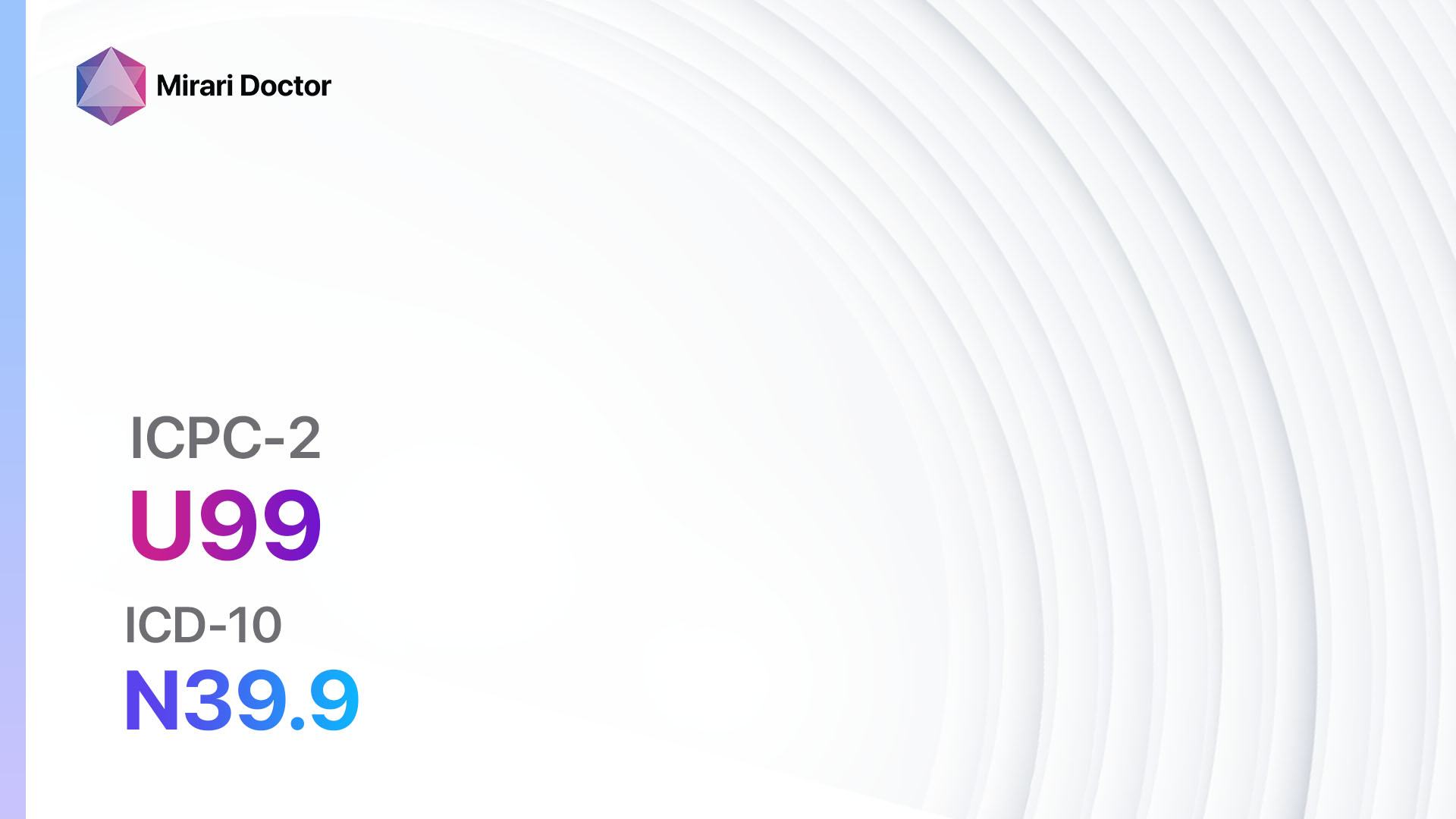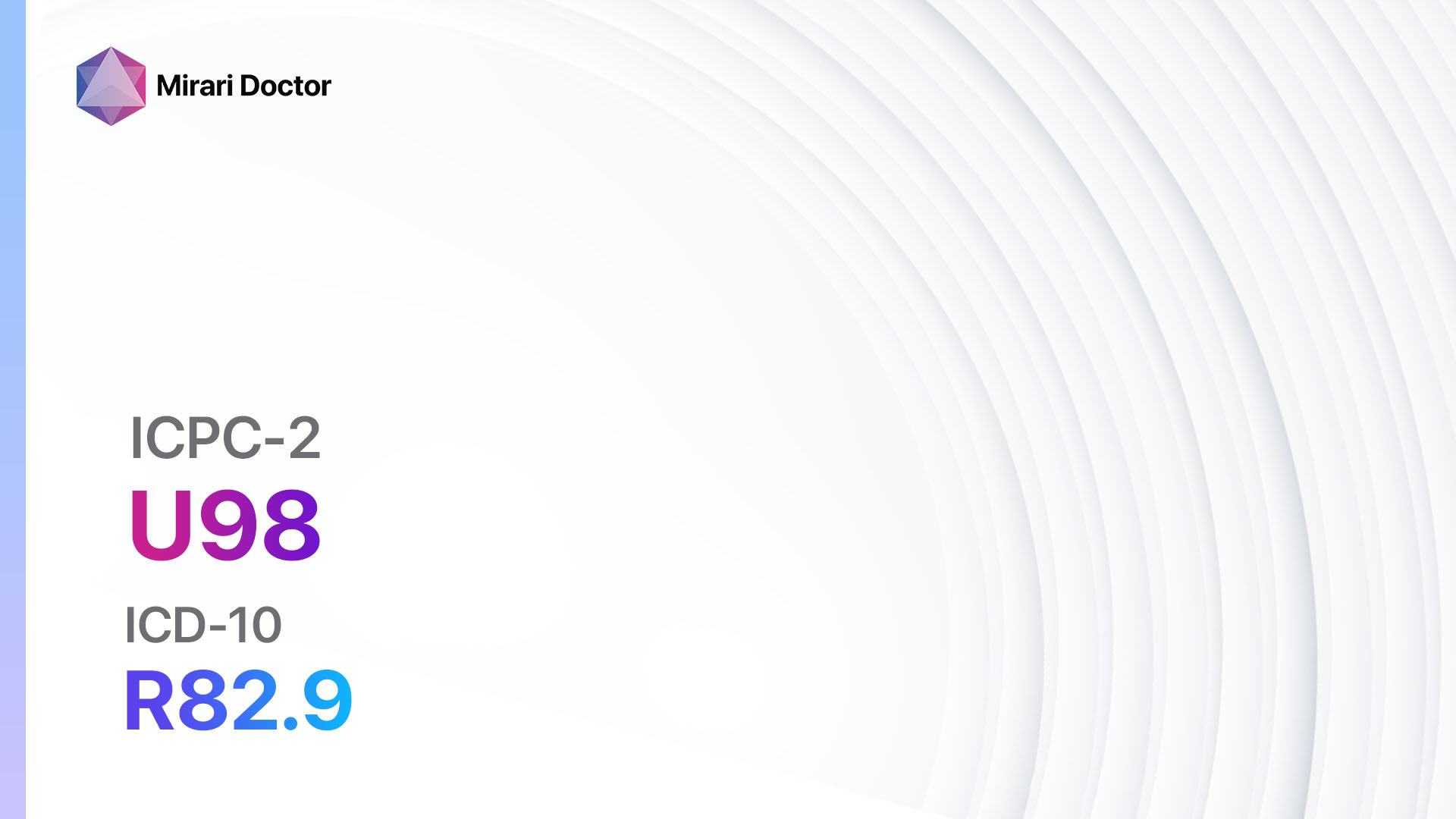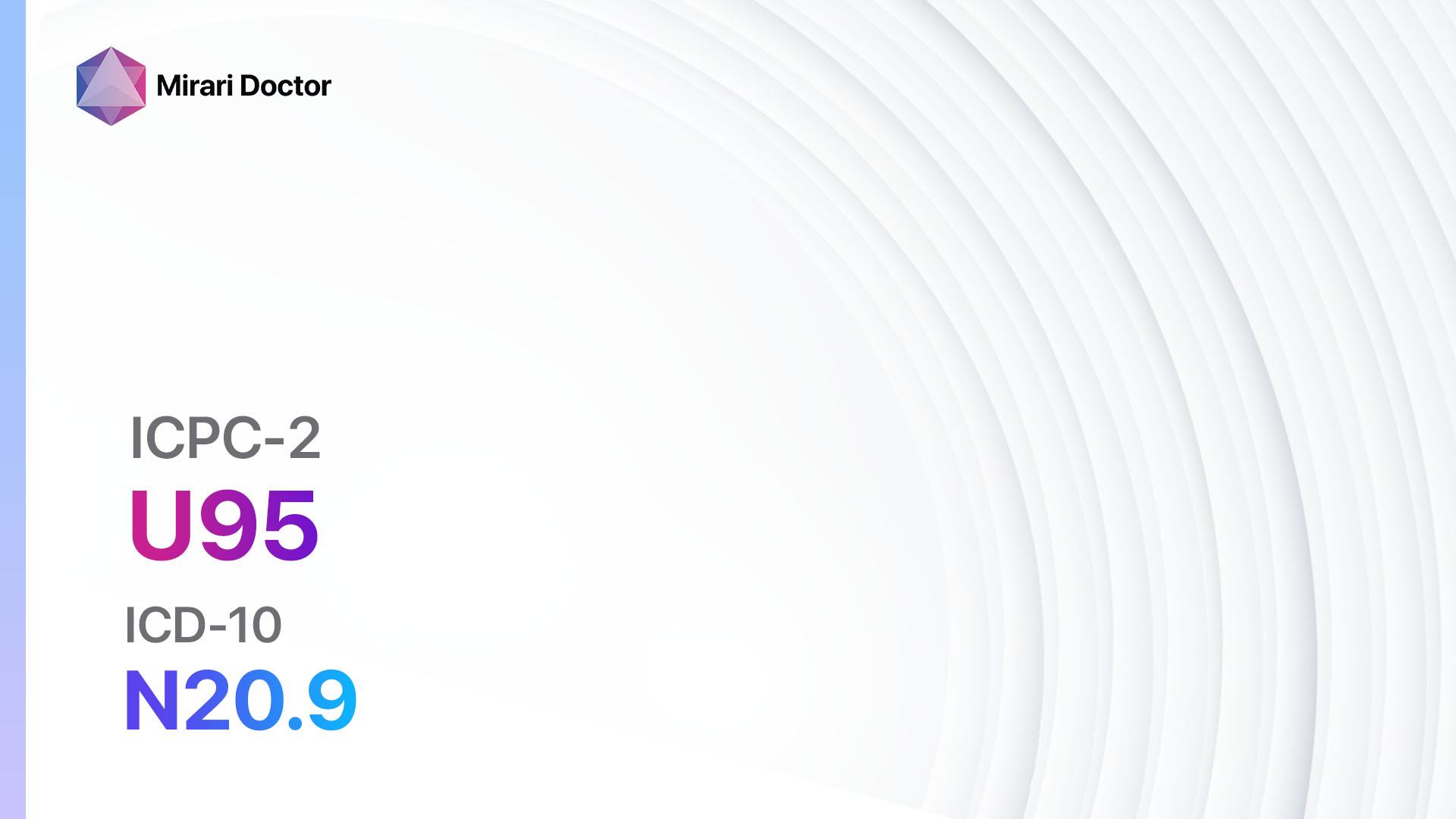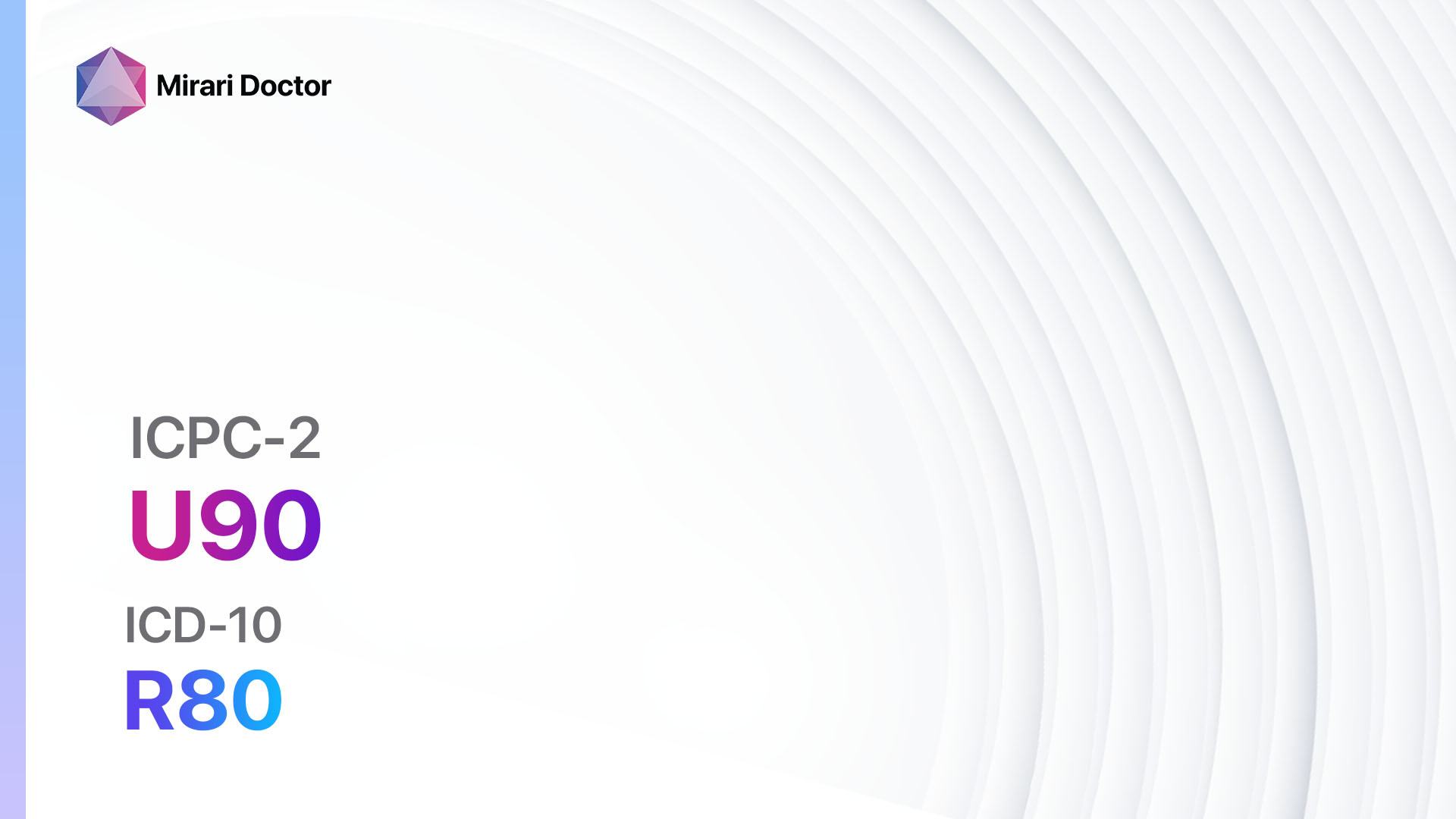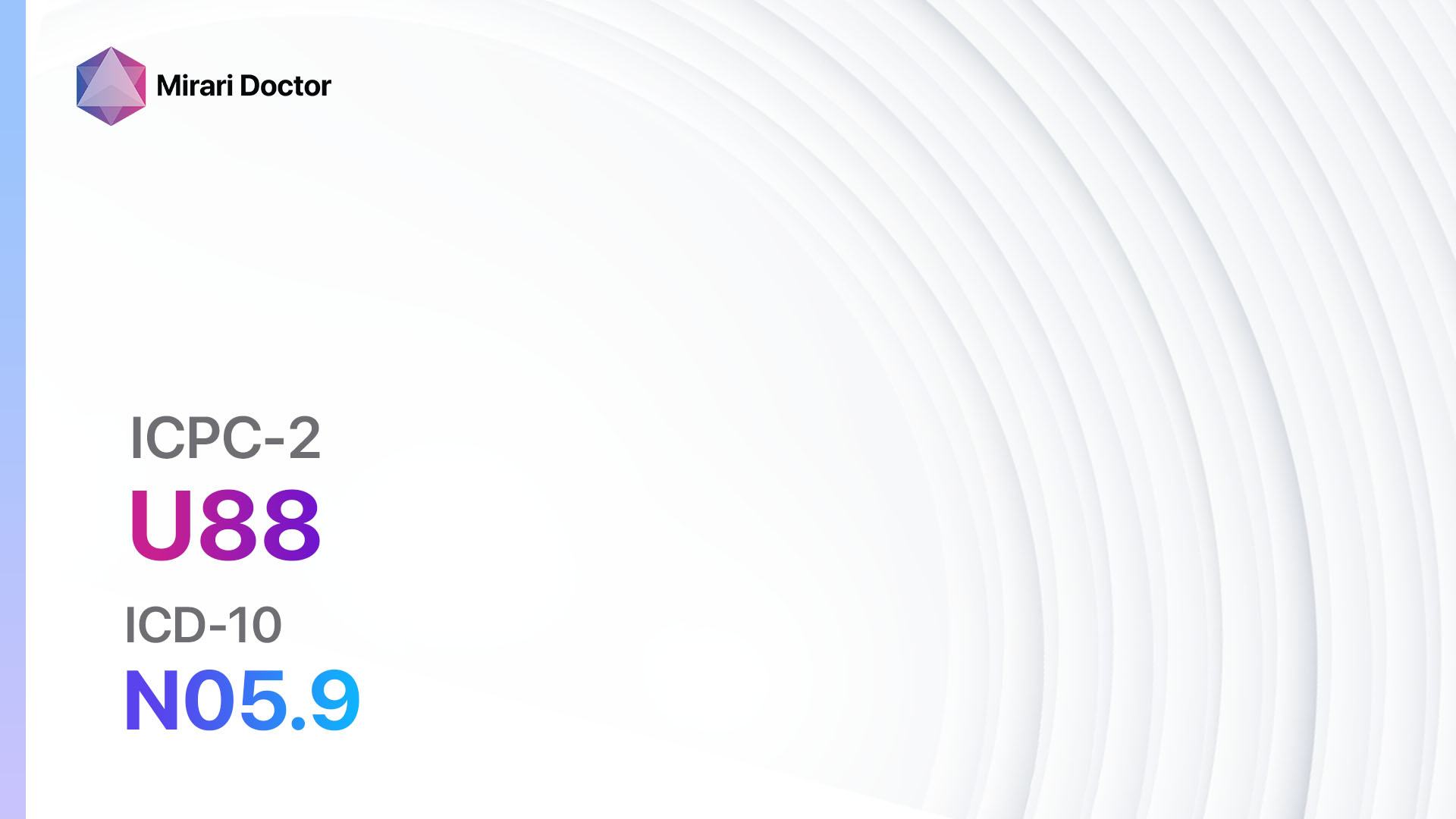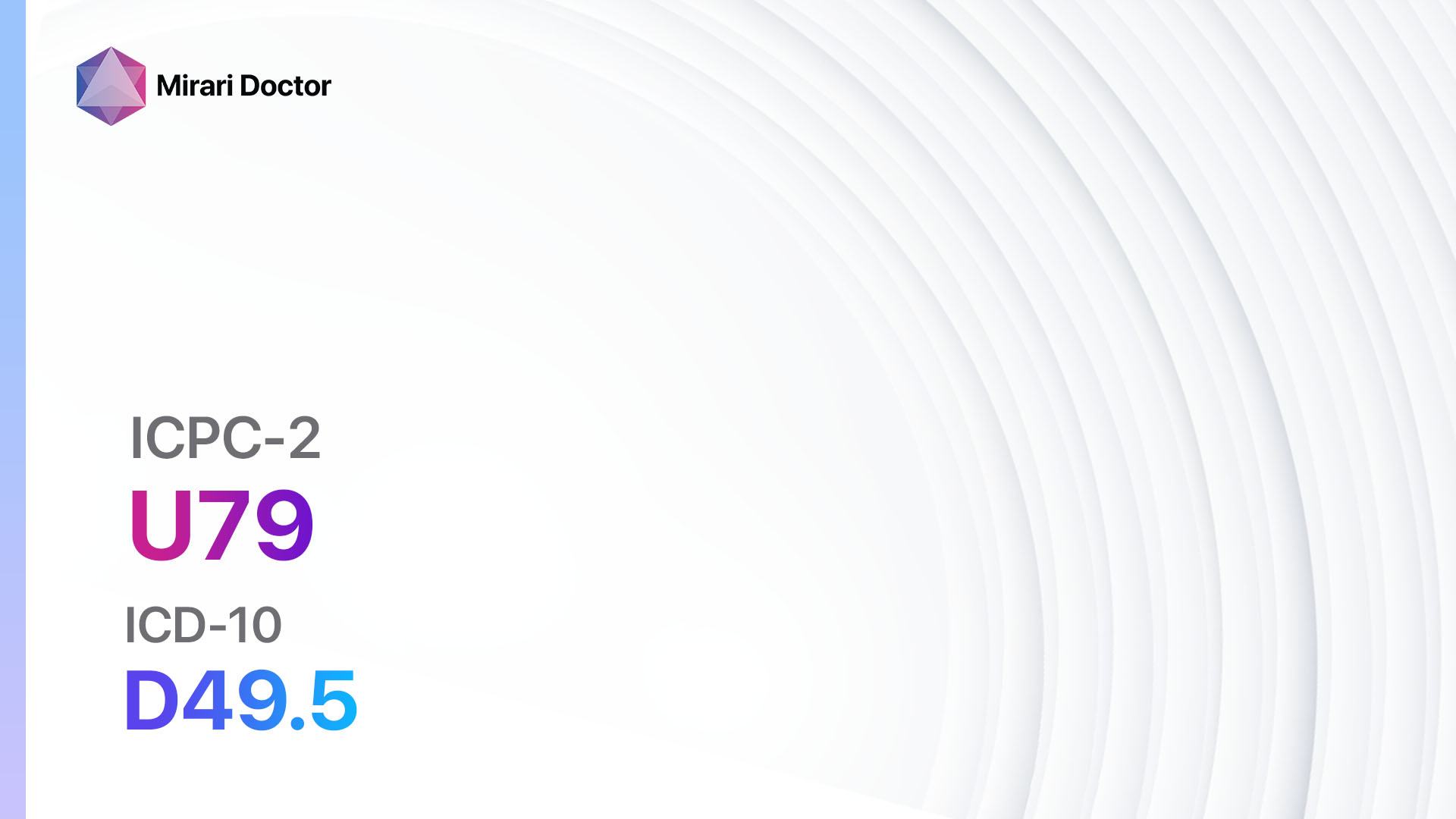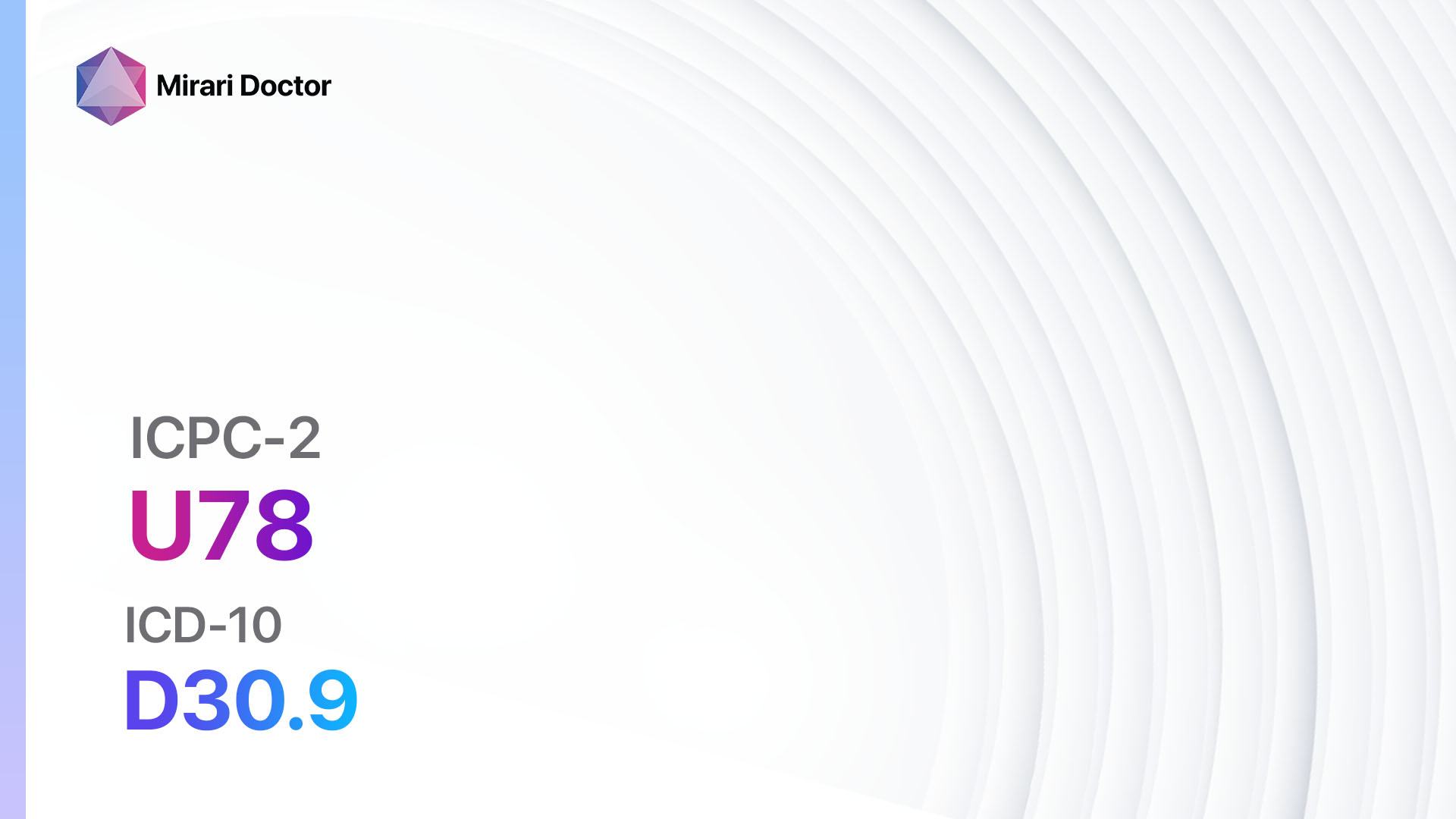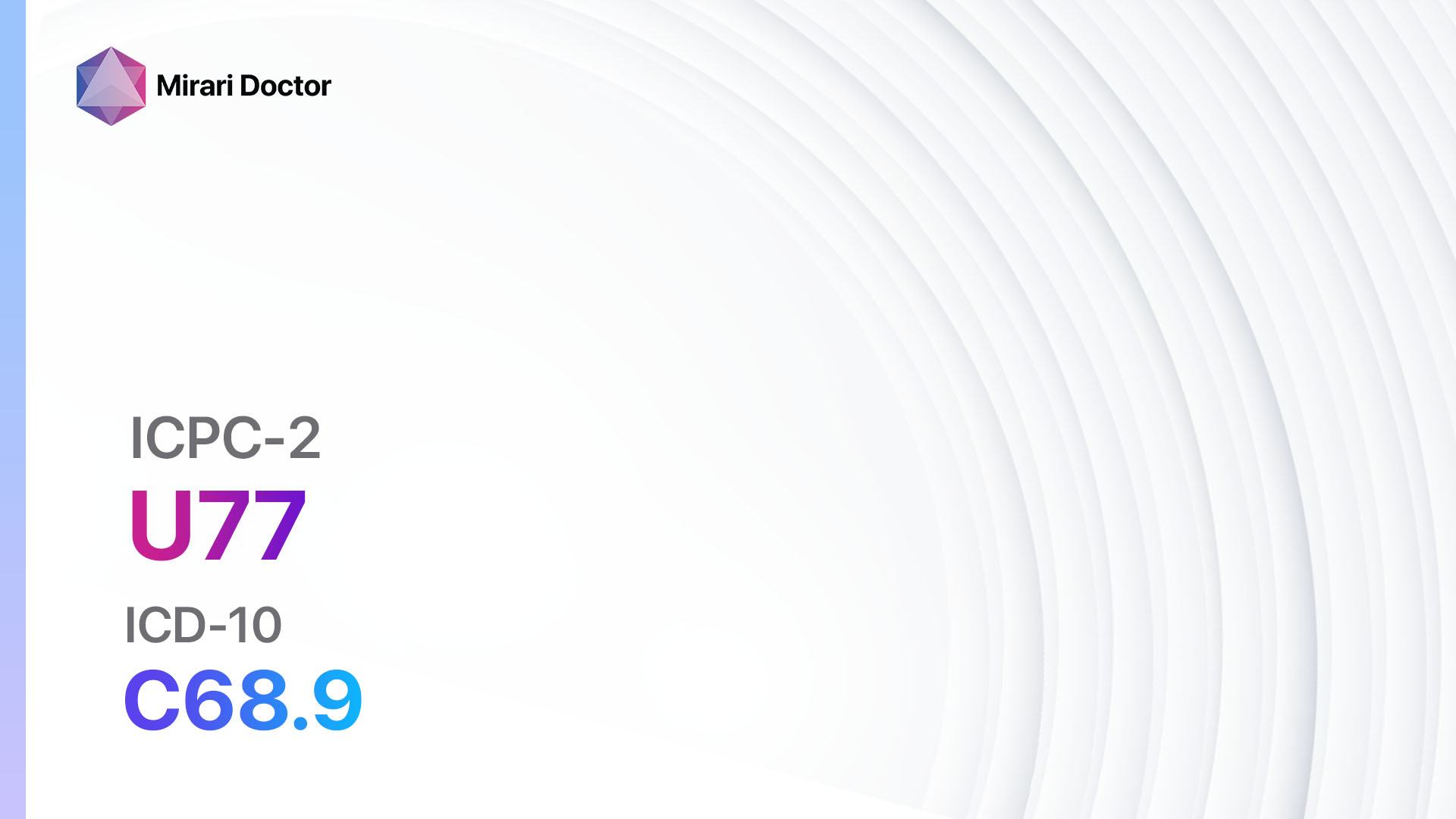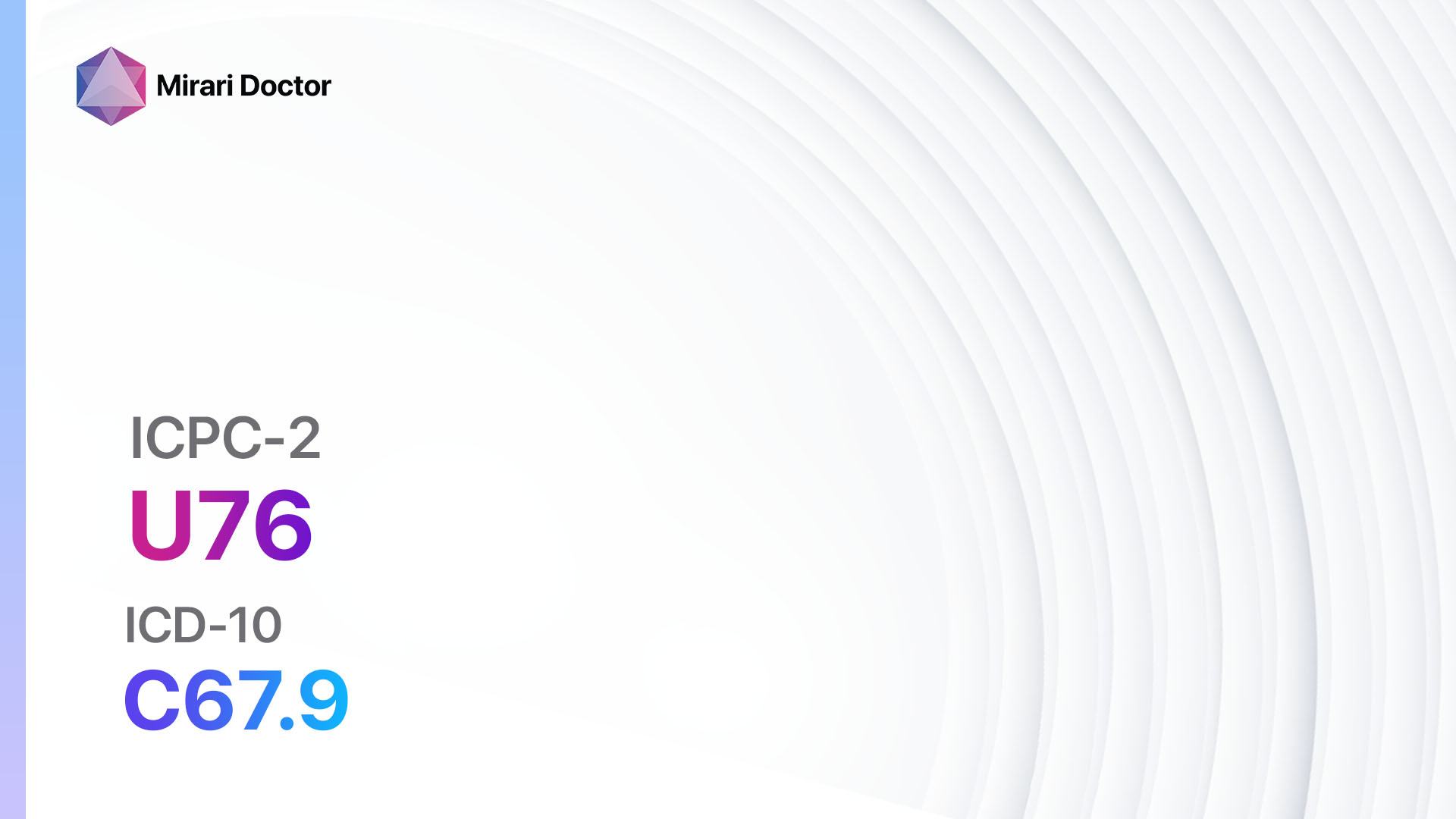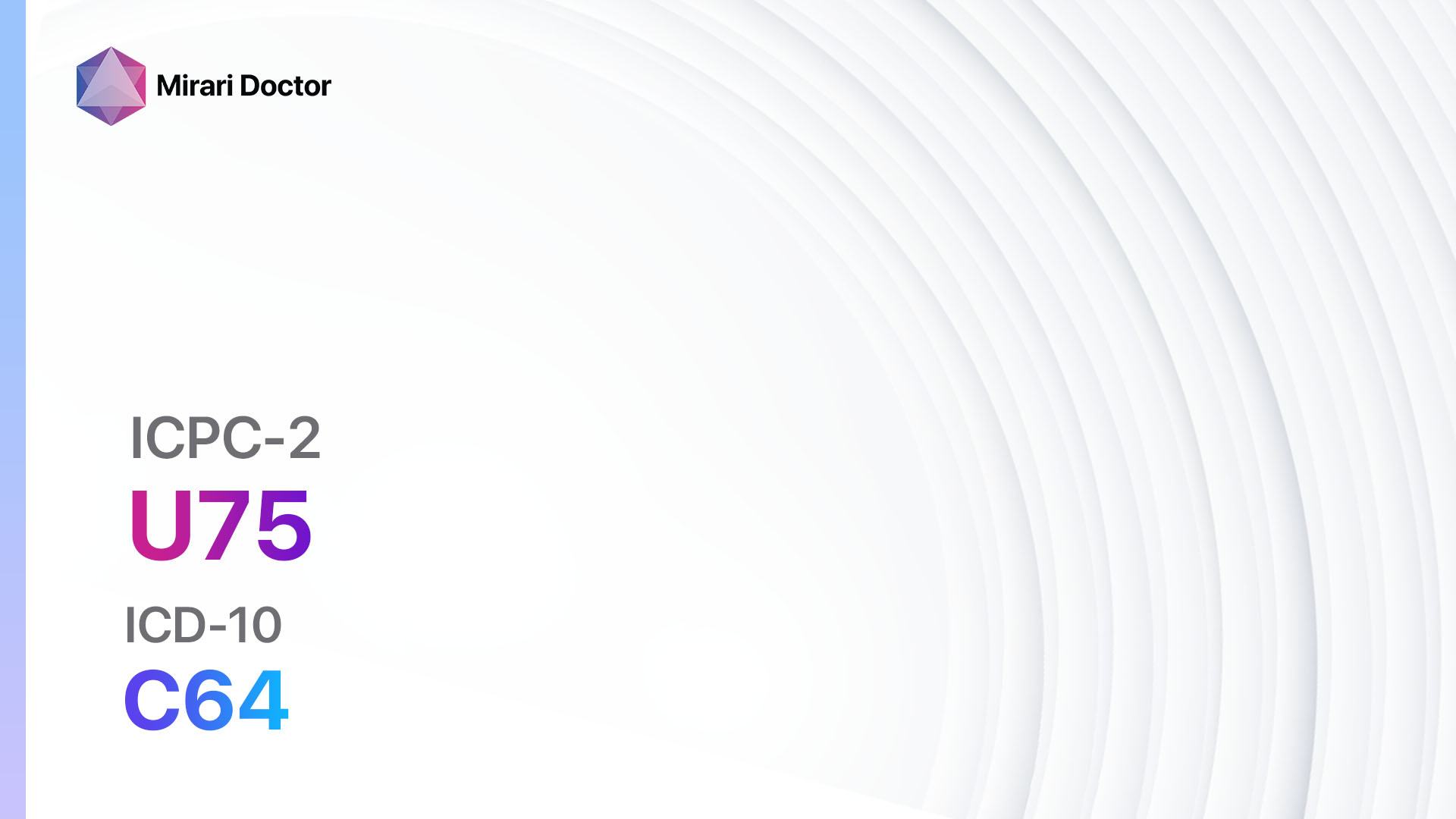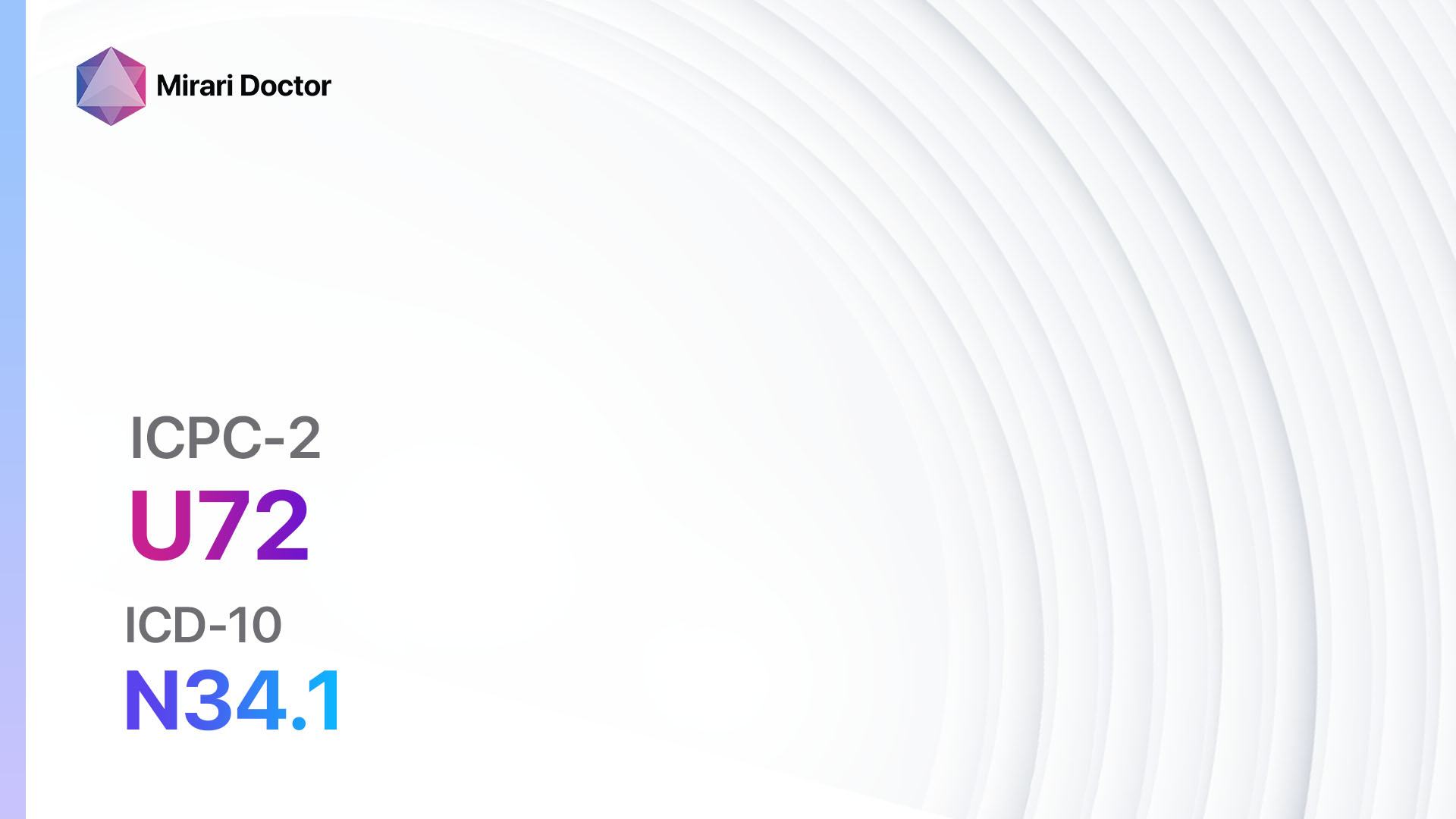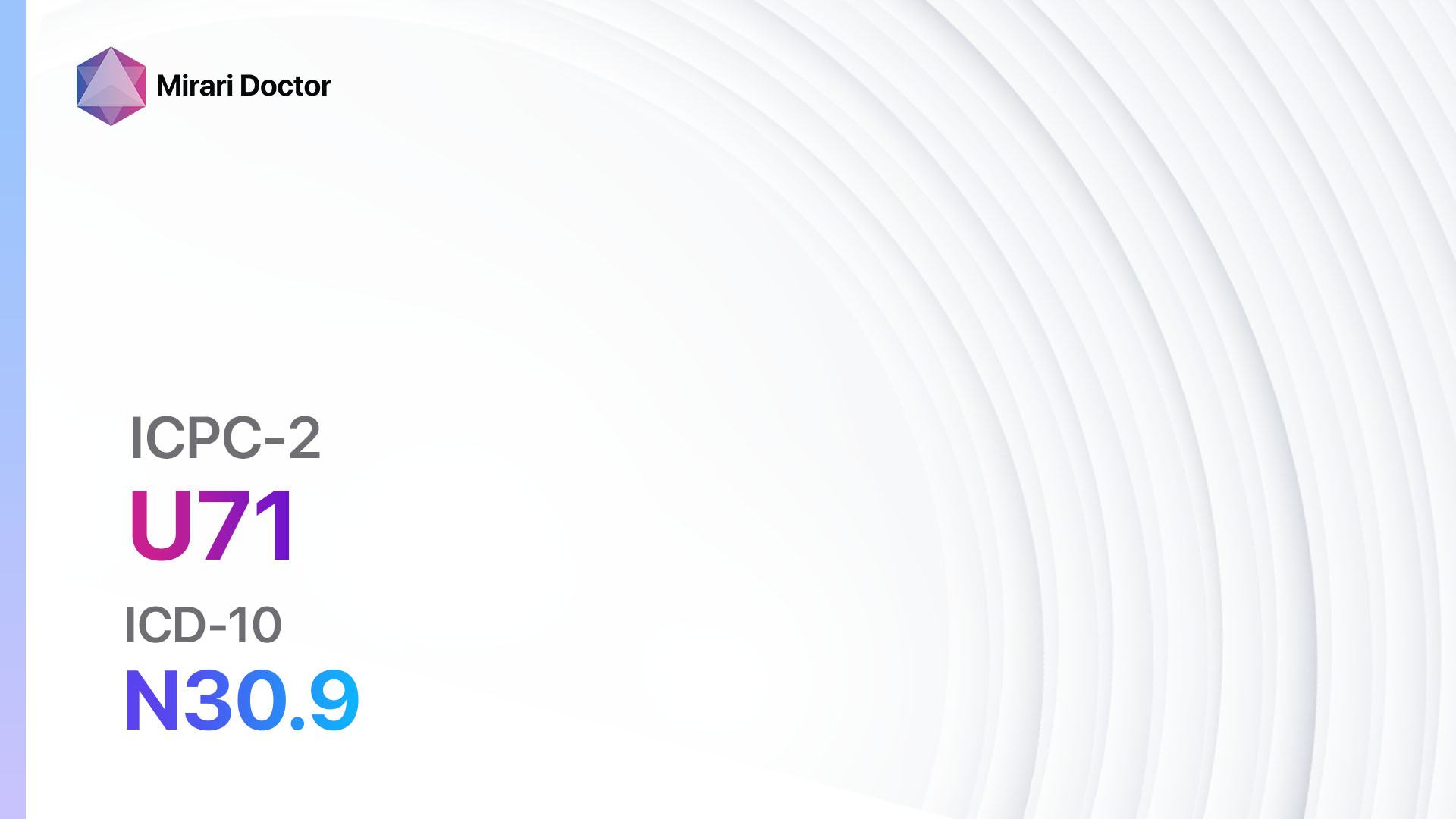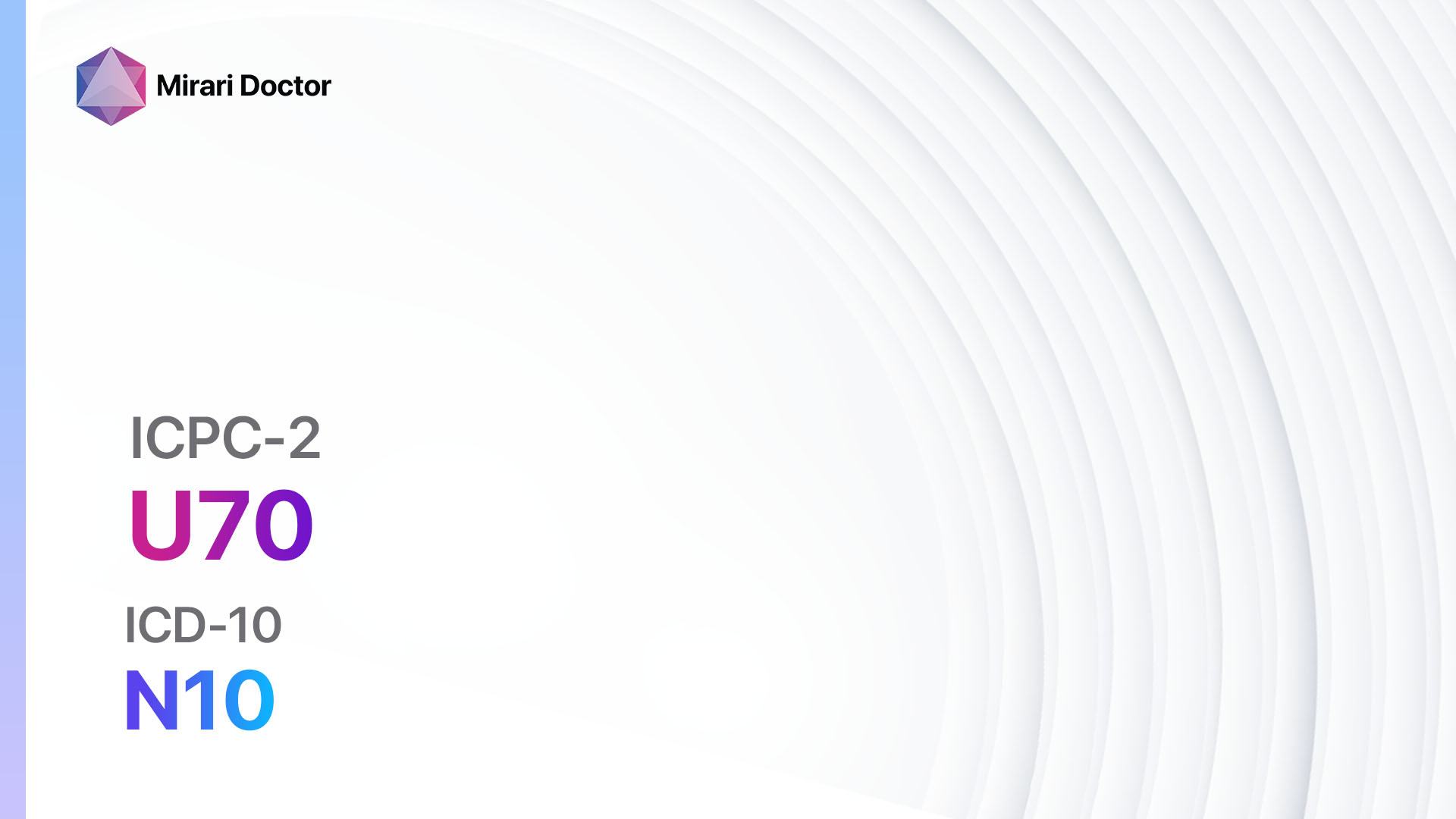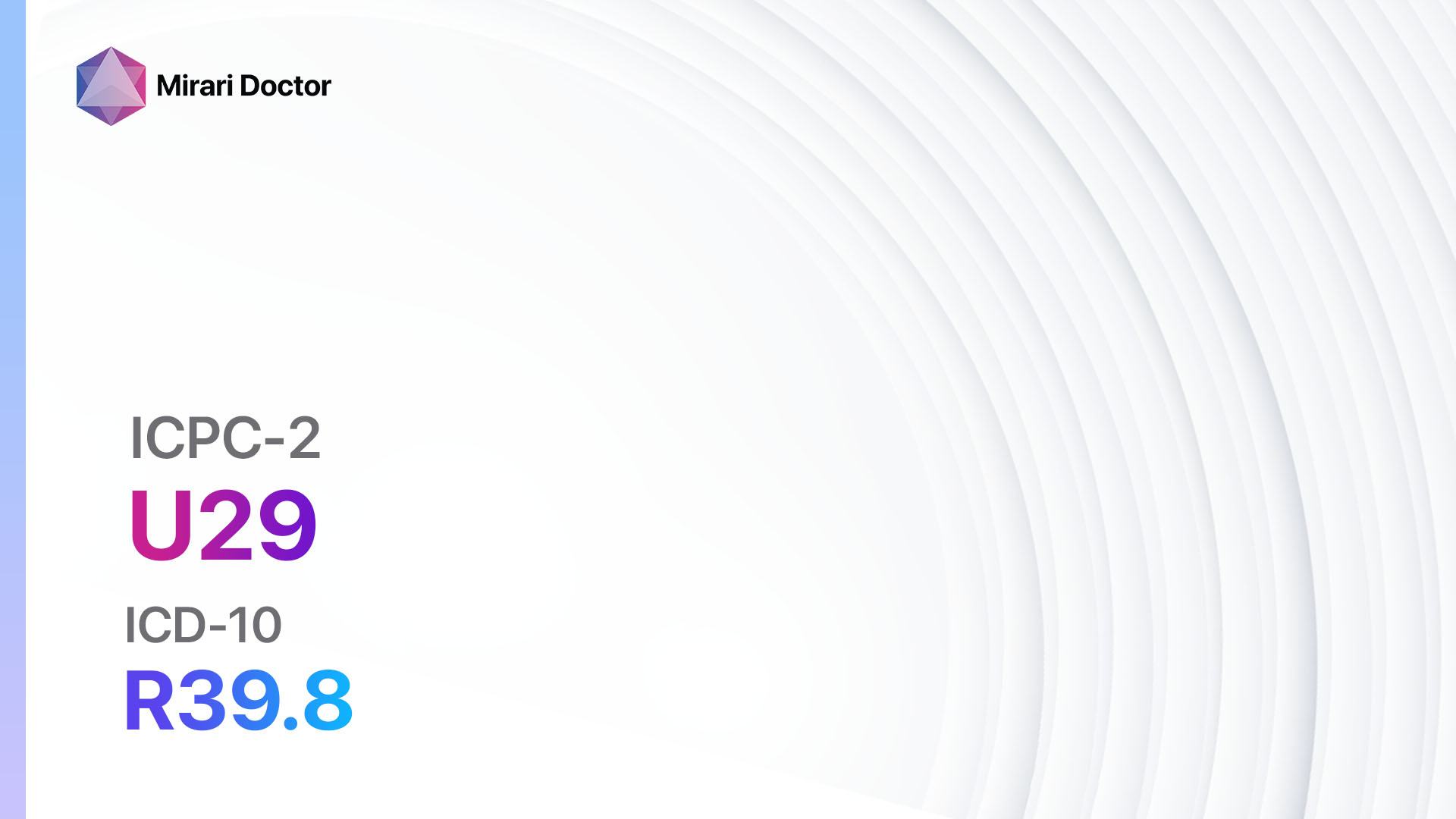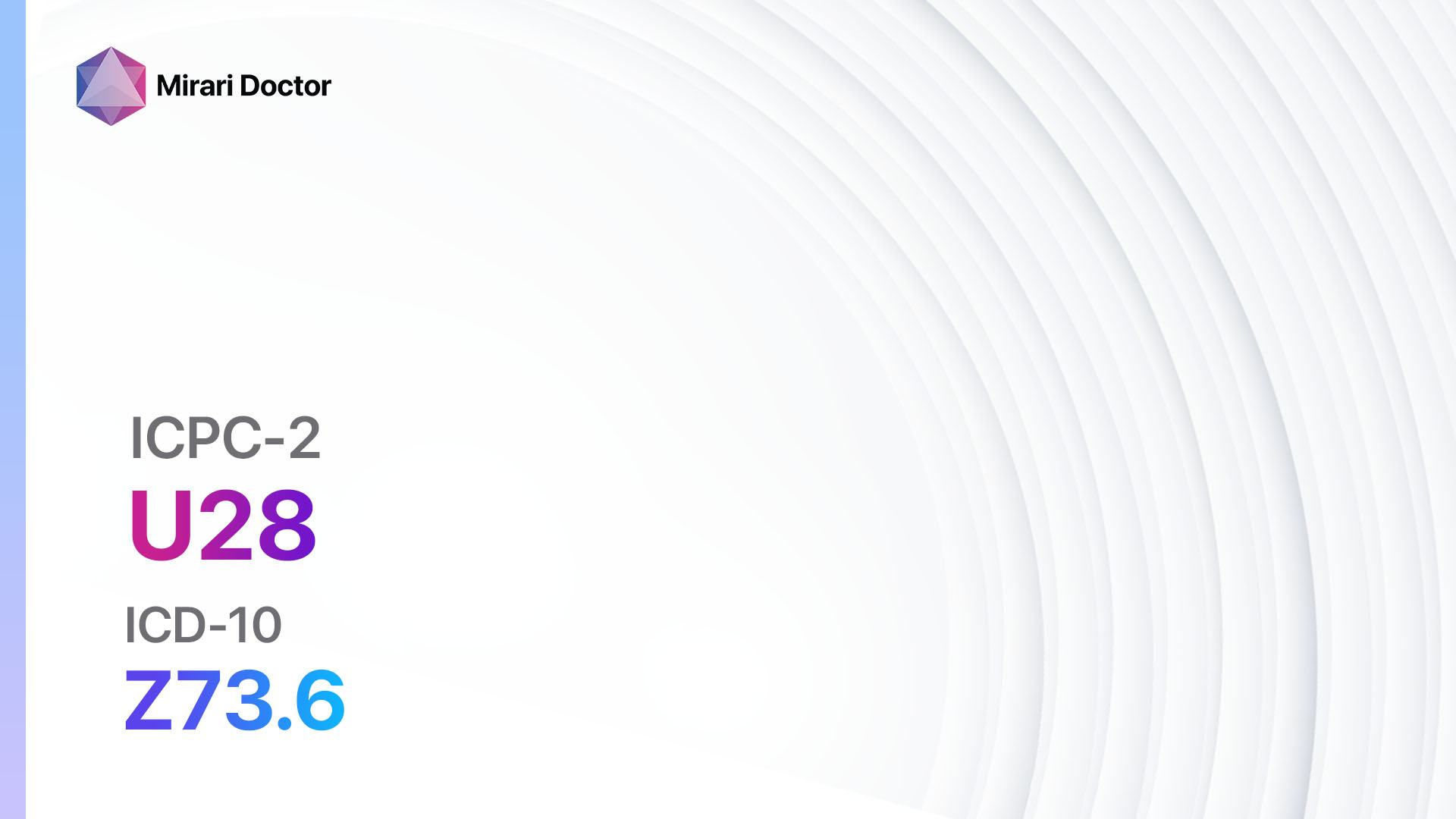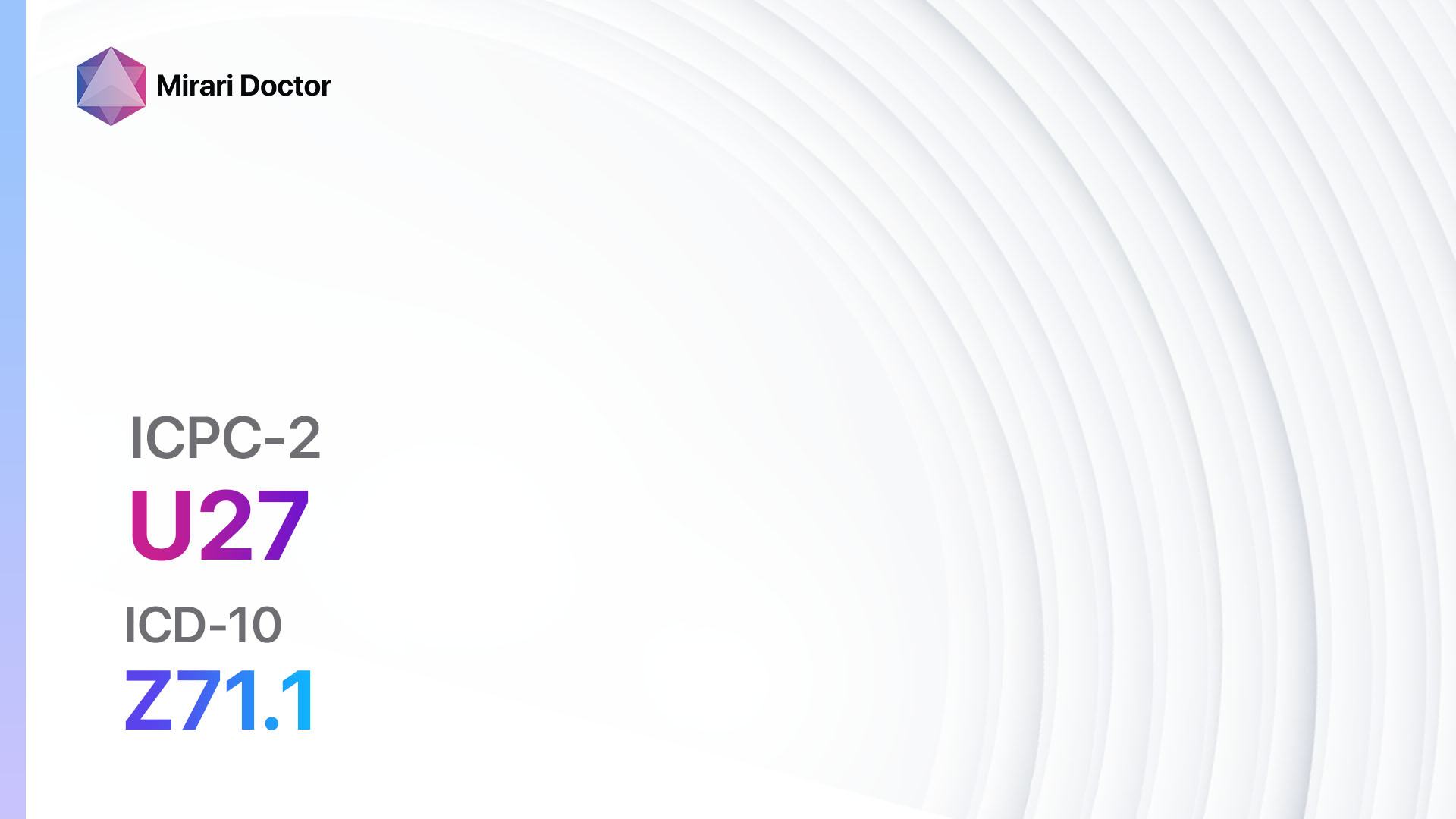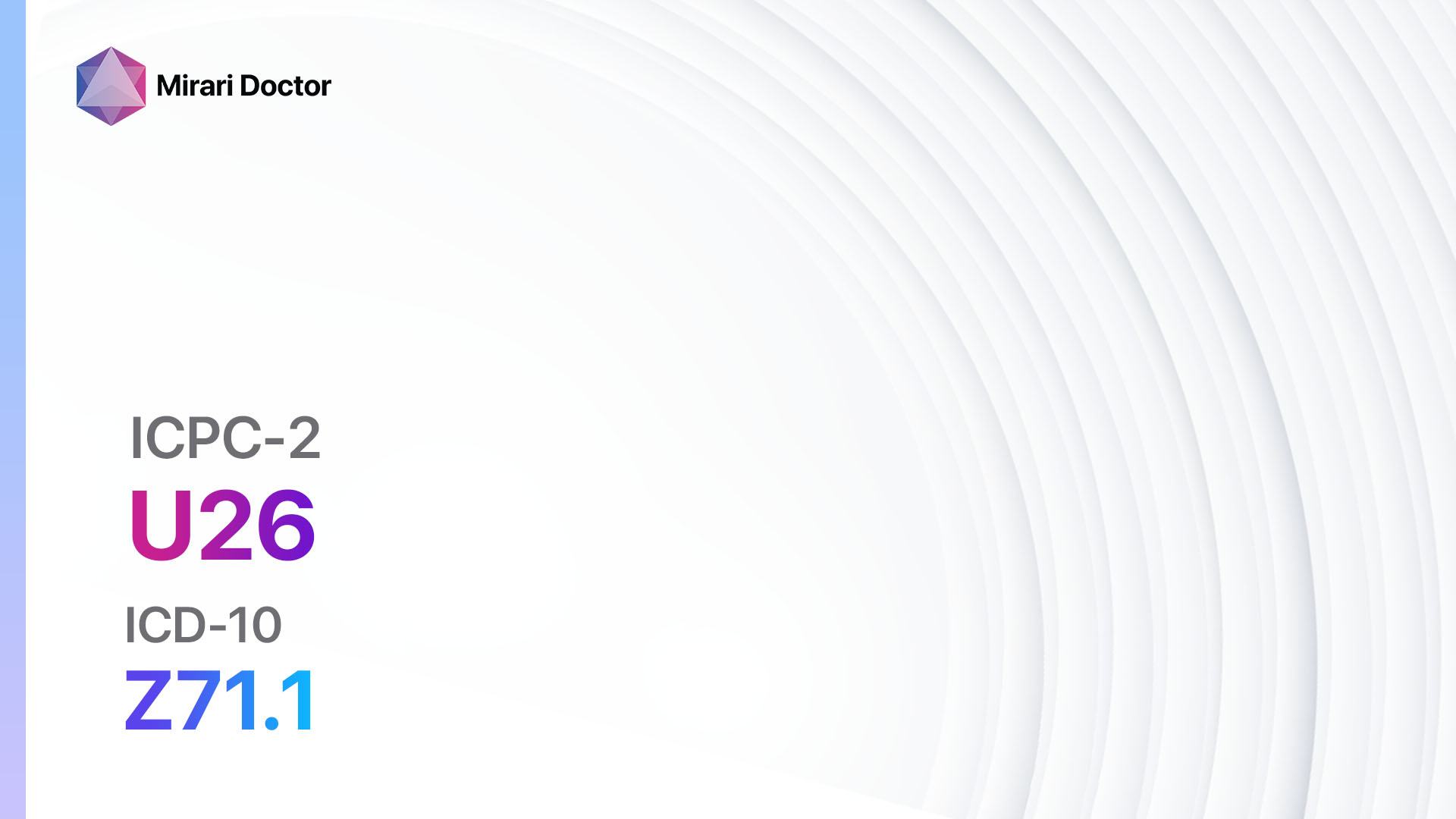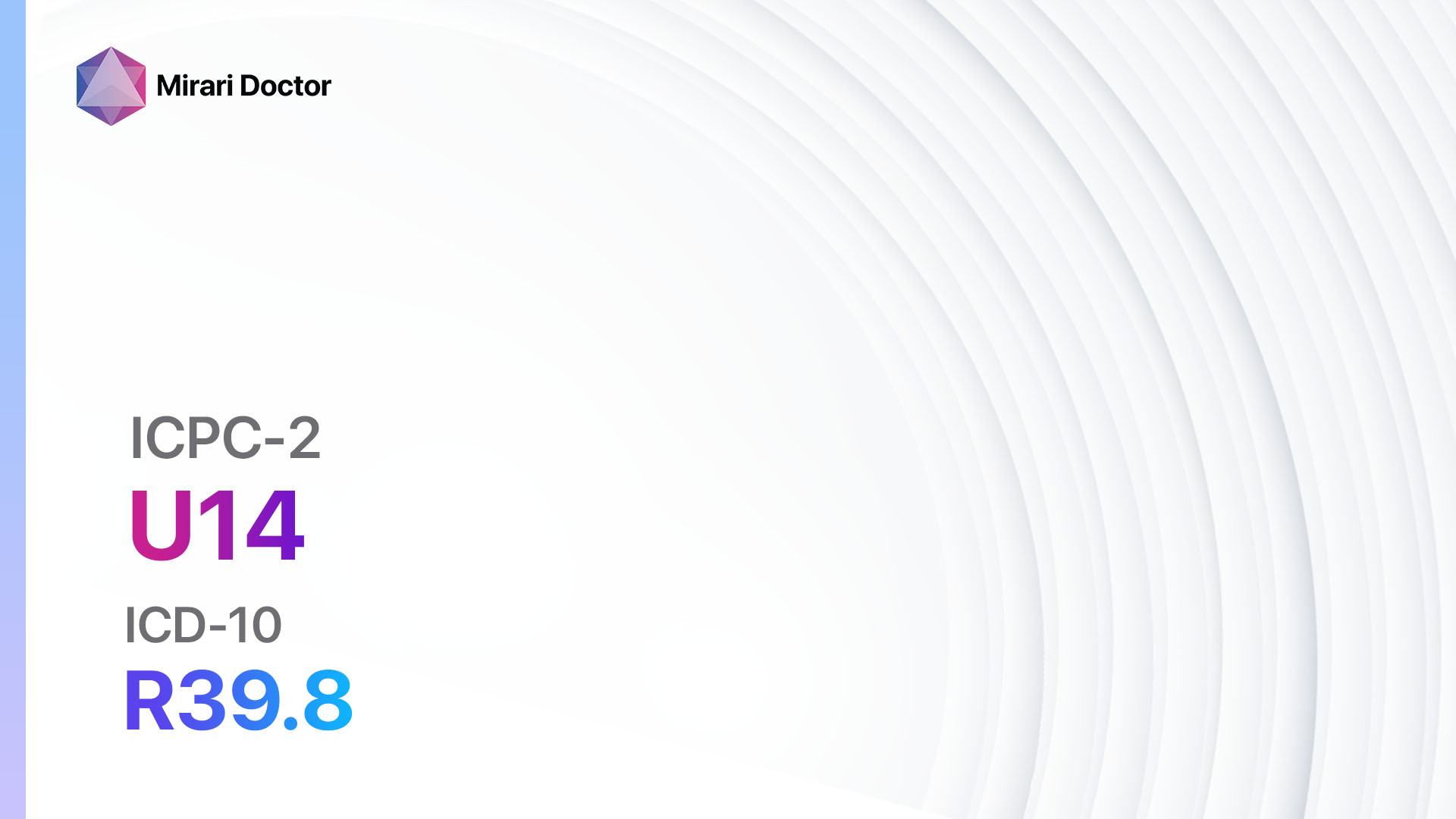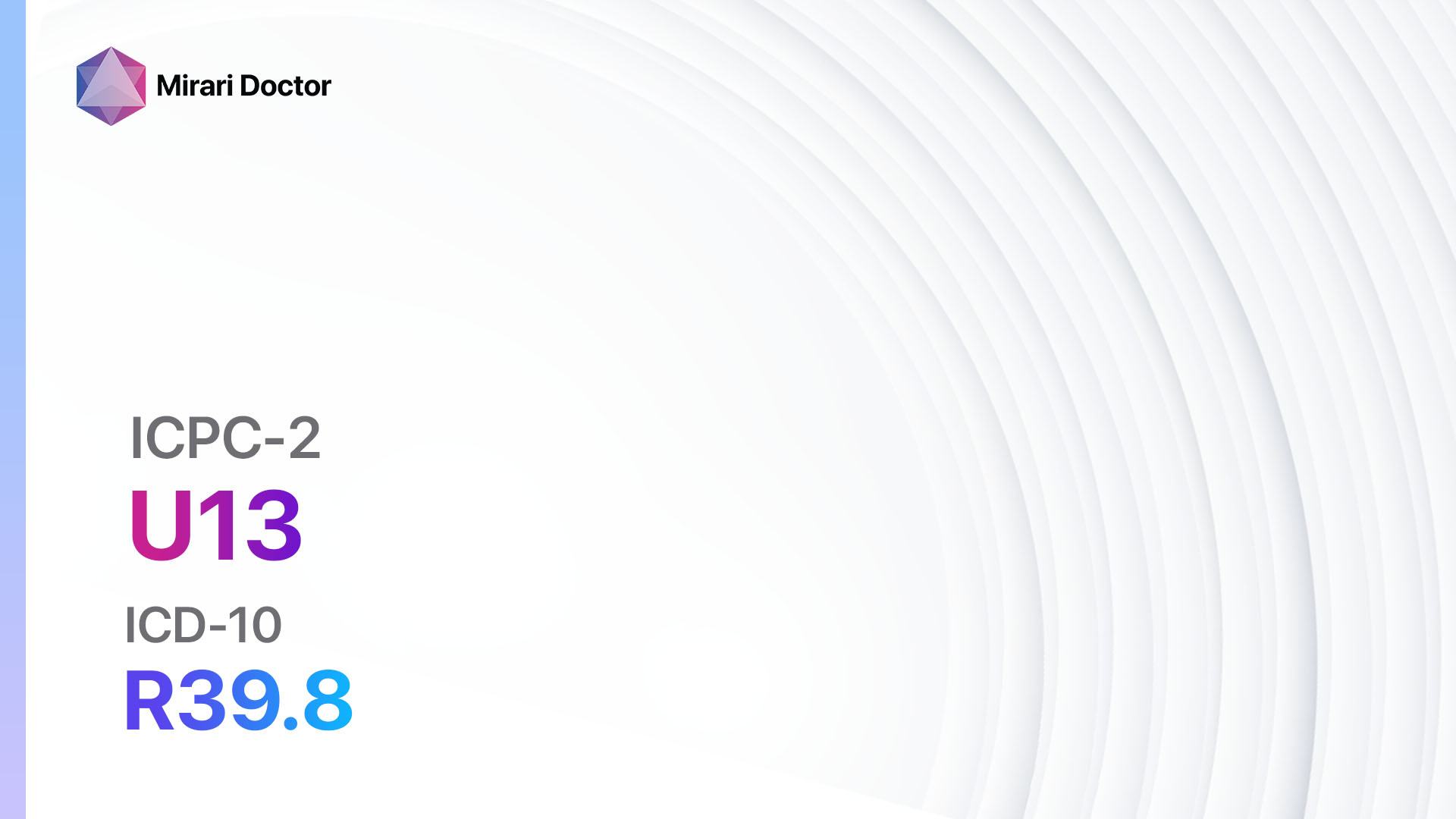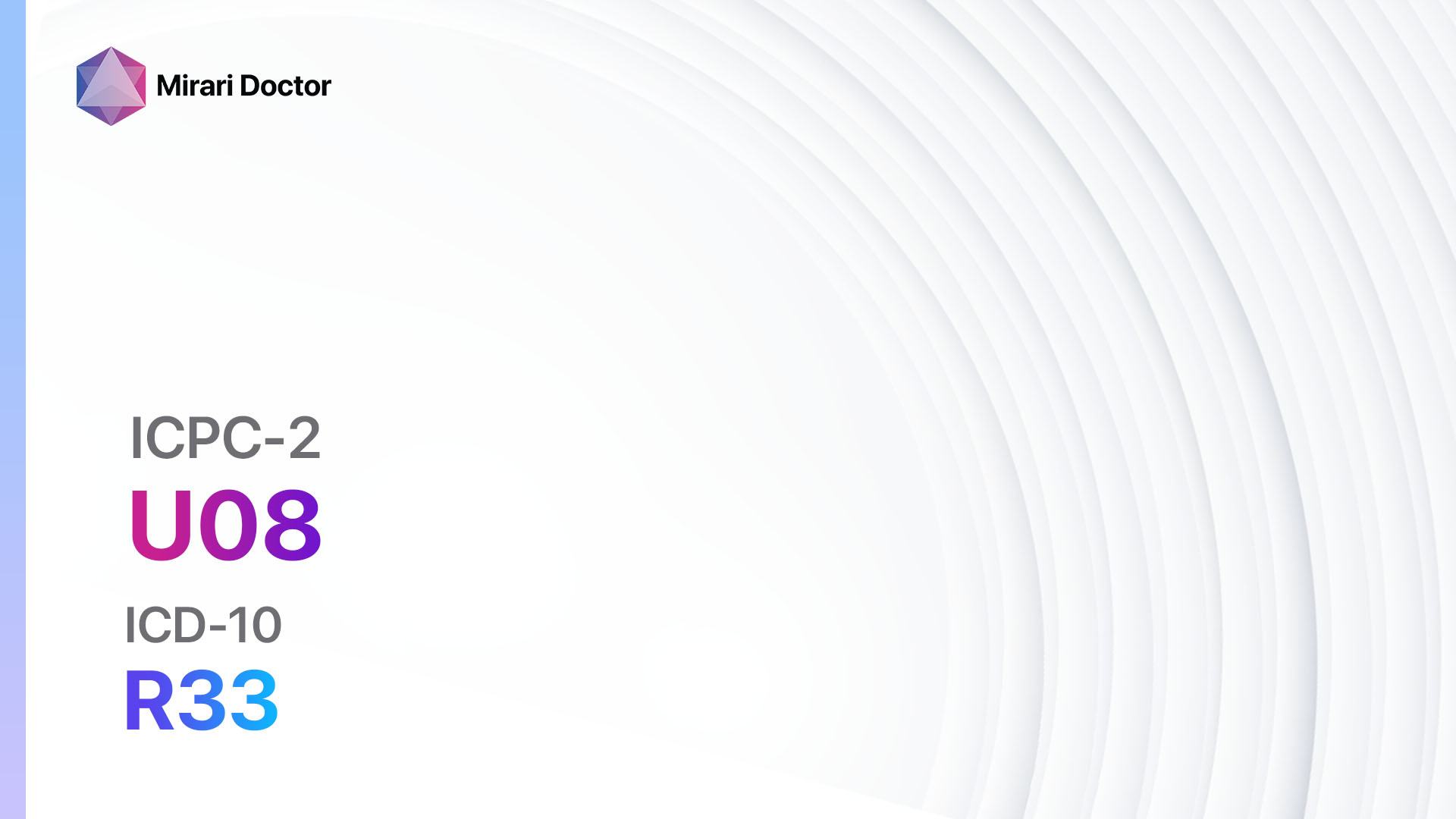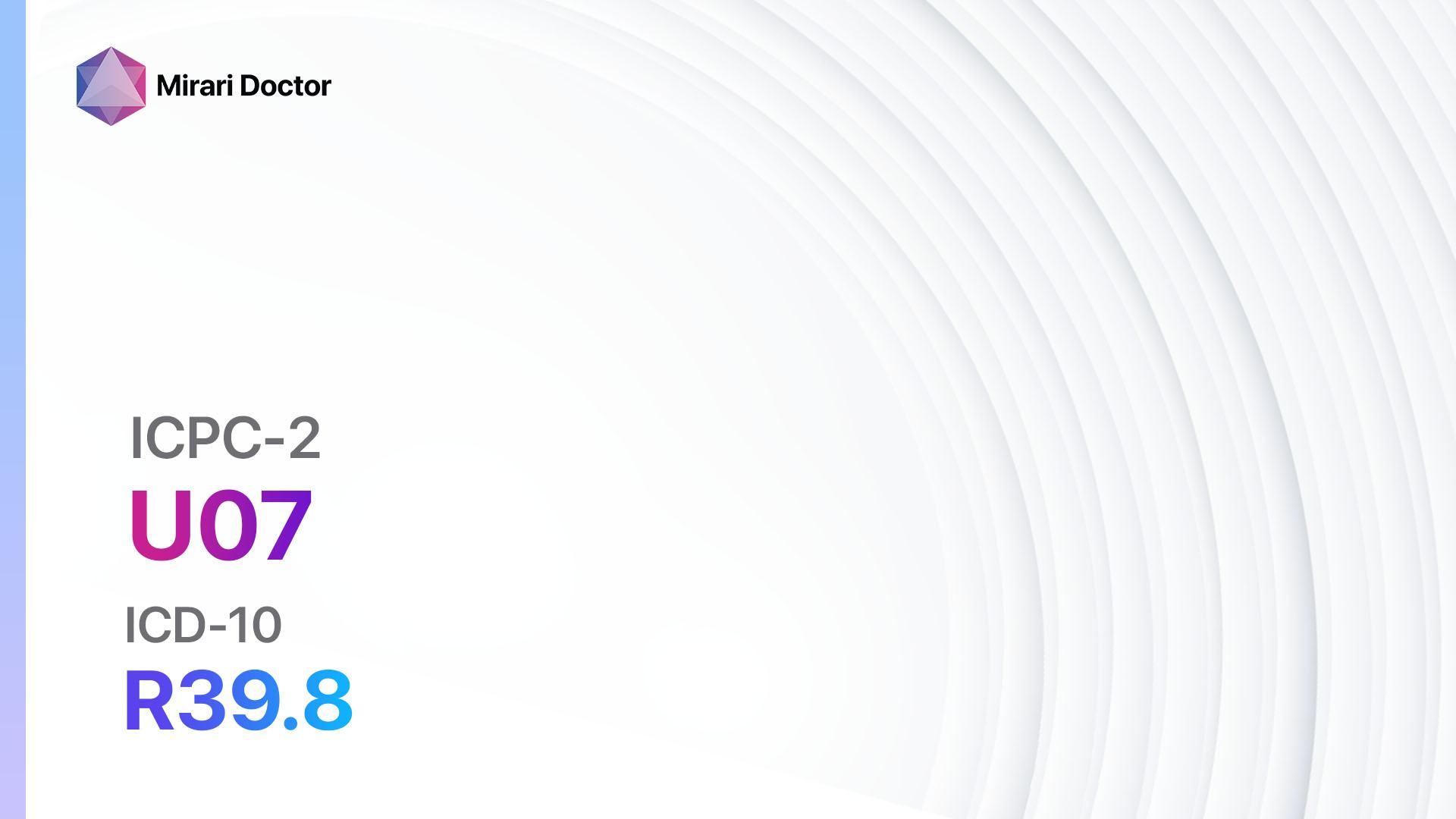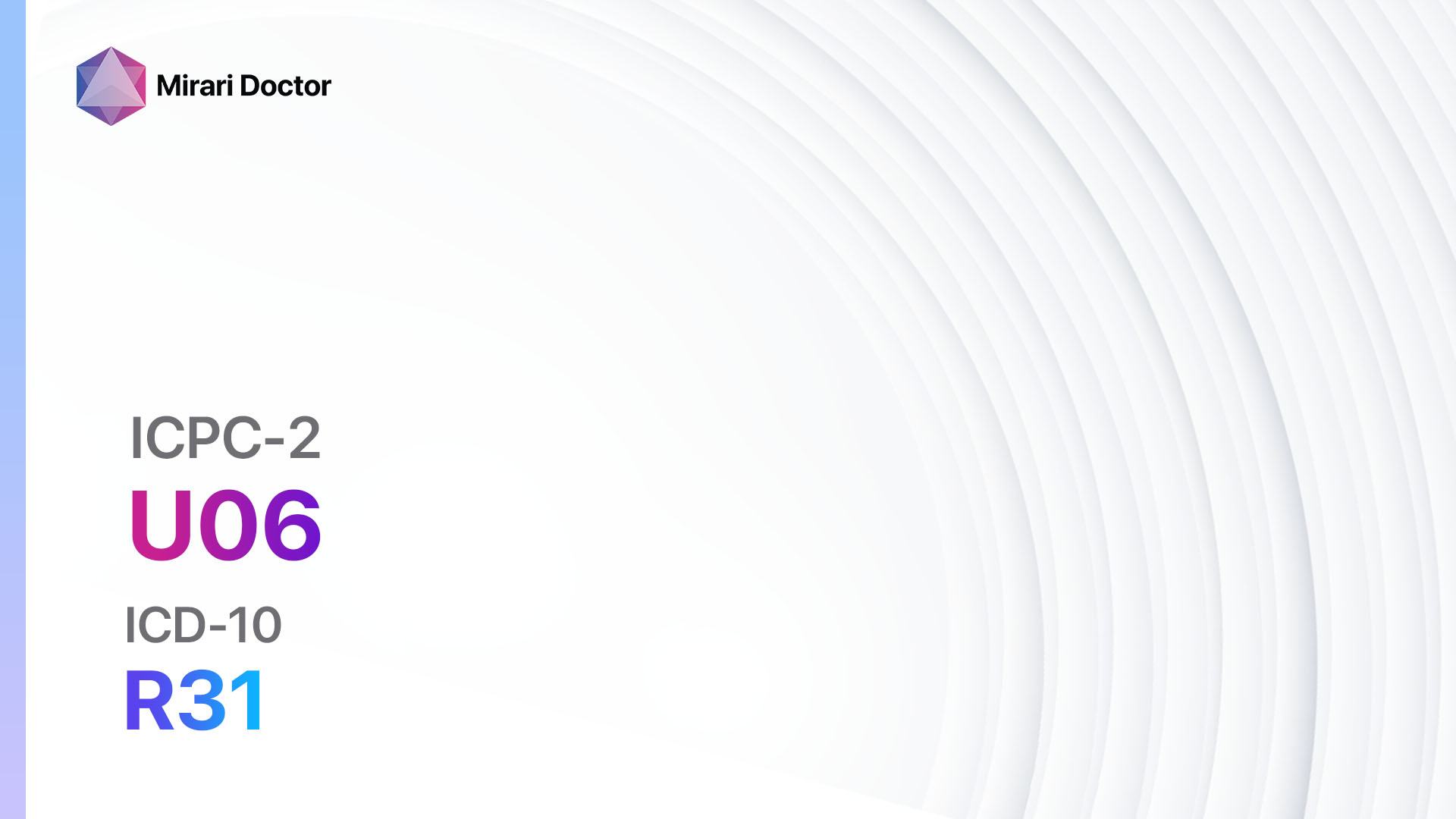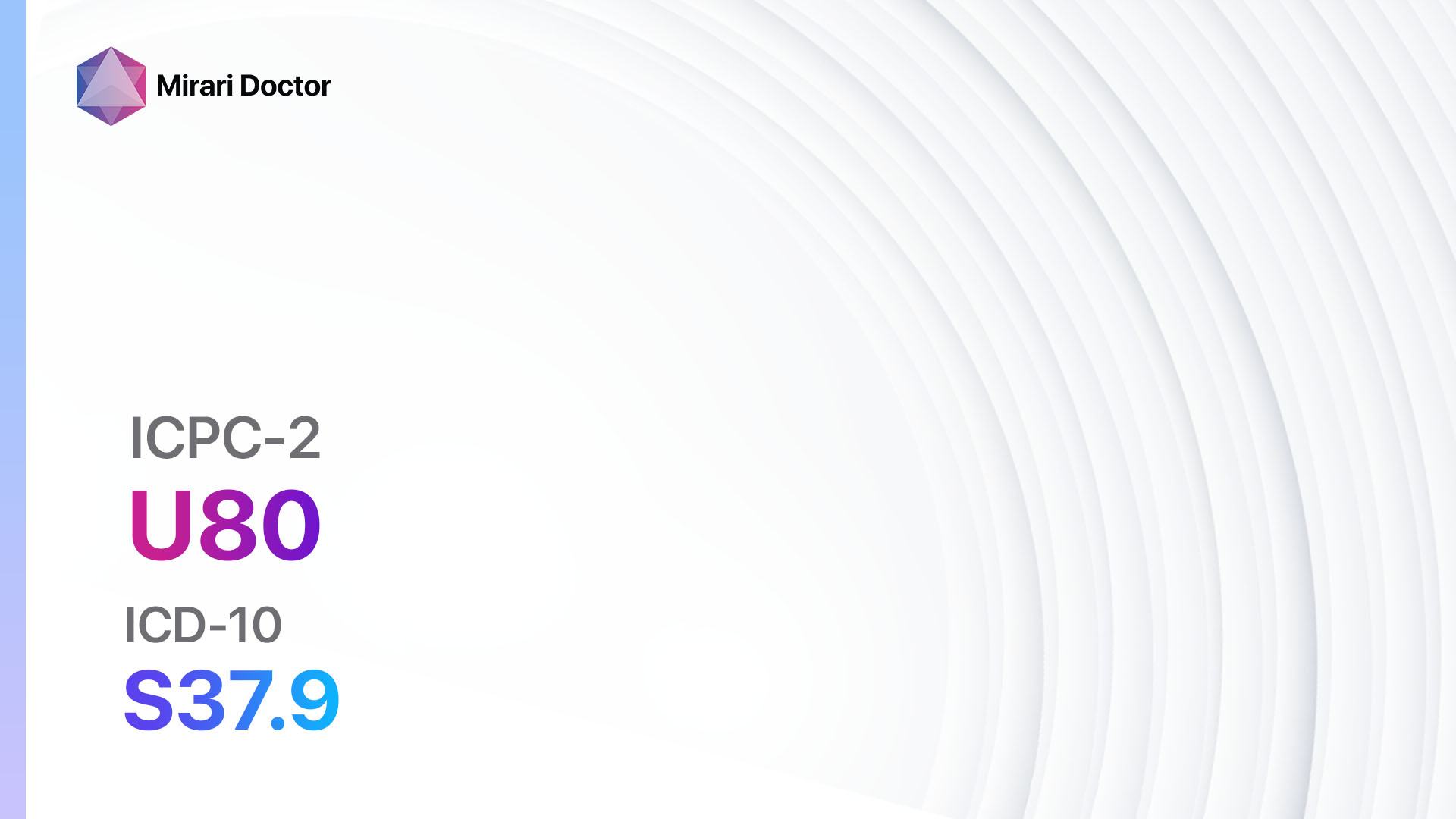
Introduction
Injury to the urinary tract can occur due to various causes, such as trauma, accidents, or medical procedures. It is important to diagnose and treat urinary tract injuries promptly to prevent complications and ensure proper healing. This guide aims to provide an overview of the symptoms, causes, diagnostic steps, possible interventions, and lifestyle interventions for urinary tract injuries.
Codes
- ICPC-2 Code: U80 Injury urinary tract
- ICD-10 Code: S37.9 Injury of unspecified urinary and pelvic organ
Symptoms
- Hematuria (blood in the urine)[1]
- Pain or discomfort in the lower abdomen or pelvic region[2]
- Frequent urination or urgency[3]
- Difficulty urinating or weak urine flow[4]
- Inability to control urine (incontinence)[5]
- Pain or burning sensation during urination[6]
- Fever or chills (indicating infection)[7]
Causes
- Trauma or injury to the urinary tract, such as from accidents or falls[8]
- Medical procedures, such as catheterization or surgery[9]
- Blunt force trauma to the lower abdomen or pelvic region[10]
- Penetrating injuries, such as gunshot wounds or stab wounds[1]
Diagnostic Steps
Medical History
- Gather information about the patient’s history of trauma or recent medical procedures
- Inquire about the presence of symptoms, such as hematuria, pain, or difficulty urinating
- Assess for risk factors, such as a history of urinary tract infections or kidney stones
Physical Examination
- Perform a thorough physical examination, including inspection, palpation, and percussion of the abdomen and pelvic region
- Check for signs of tenderness, swelling, or bruising in the lower abdomen or pelvic area
- Assess for any abnormalities in the urinary system, such as blood in the urine or abnormal urine flow
Laboratory Tests
- Urinalysis: Assess for the presence of blood, infection, or other abnormalities in the urine[2]
- Complete blood count (CBC): Check for signs of infection or anemia
- Blood chemistry tests: Evaluate kidney function and electrolyte levels
- Imaging studies, such as X-rays, ultrasound, CT scans, or MRIs, may be necessary to visualize and assess the extent of the injury[3]
Other Tests
- Cystoscopy: A thin tube with a camera is inserted into the urethra to visualize the urinary tract and identify any injuries[4]
- Retrograde pyelogram: A contrast dye is injected into the urinary system to identify any blockages or abnormalities[5]
- Urodynamic testing: Measures the pressure and flow of urine to assess bladder function[6]
Follow-up and Patient Education
- Schedule follow-up appointments to monitor the progress of healing and assess for any complications
- Educate the patient about the importance of proper hygiene, hydration, and avoiding activities that may exacerbate the injury
- Provide information on signs and symptoms that may indicate worsening of the condition and the need for immediate medical attention
Possible Interventions
Traditional Interventions
Medications:
Top 5 drugs for urinary tract injuries:
- Antibiotics (e.g., Ciprofloxacin, Trimethoprim/sulfamethoxazole):
- Cost: Generic versions can be $3-$50/month.
- Contraindications: Hypersensitivity to the medication.
- Side effects: Nausea, diarrhea, allergic reactions.
- Severe side effects: Tendon rupture, severe skin reactions.
- Drug interactions: Warfarin, other medications that affect the liver or kidneys.
- Warning: Finish the full course of antibiotics as prescribed.
- Analgesics (e.g., Acetaminophen, Ibuprofen):
- Cost: Over-the-counter options are available at a low cost. Prescription-strength medications may range from $10-$50/month.
- Contraindications: Allergy to the medication, history of stomach ulcers or bleeding disorders.
- Side effects: Upset stomach, dizziness, drowsiness.
- Severe side effects: Liver damage, gastrointestinal bleeding.
- Drug interactions: Other pain medications, blood thinners.
- Warning: Follow the recommended dosage and avoid exceeding the maximum daily limit.
- Muscle relaxants (e.g., Baclofen, Methocarbamol):
- Cost: Generic versions can be $10-$50/month.
- Contraindications: Allergy to the medication, history of liver or kidney disease.
- Side effects: Drowsiness, dizziness, dry mouth.
- Severe side effects: Severe allergic reactions, liver toxicity.
- Drug interactions: Sedatives, alcohol.
- Warning: Avoid activities that require mental alertness while taking muscle relaxants.
- Alpha-blockers (e.g., Tamsulosin, Terazosin):
- Cost: Generic versions can be $10-$50/month.
- Contraindications: Allergy to the medication, low blood pressure.
- Side effects: Dizziness, headache, nasal congestion.
- Severe side effects: Fainting, irregular heartbeat.
- Drug interactions: Other medications that lower blood pressure.
- Warning: Take the medication as prescribed and avoid sudden changes in posture.
- Antispasmodics (e.g., Oxybutynin, Tolterodine):
- Cost: Generic versions can be $10-$50/month.
- Contraindications: Allergy to the medication, urinary retention, glaucoma.
- Side effects: Dry mouth, constipation, blurred vision.
- Severe side effects: Difficulty urinating, hallucinations.
- Drug interactions: Other medications with anticholinergic effects.
- Warning: Avoid activities that require mental alertness while taking antispasmodics.
Alternative Drugs:
- Nonsteroidal anti-inflammatory drugs (NSAIDs) (e.g., Naproxen, Diclofenac): Can help reduce pain and inflammation.
- Urinary analgesics (e.g., Phenazopyridine): Provides relief from urinary pain and discomfort.
- Alpha-agonists (e.g., Phenylephrine): Can help constrict blood vessels and reduce bleeding.
- Antibacterial ointments (e.g., Neosporin): Used for topical application to prevent infection in open wounds.
- Antifungal medications (e.g., Clotrimazole, Fluconazole): May be necessary if a fungal infection is present.
Surgical Procedures:
- Surgical repair of urinary tract injuries: In cases of severe or complex injuries, surgical intervention may be required to repair the damaged structures and restore normal urinary function. The cost of surgical procedures can vary significantly depending on the complexity of the injury and the healthcare facility.
Alternative Interventions
- Acupuncture: May help reduce pain and promote healing. Cost: $60-$120 per session.
- Herbal remedies: Some herbs, such as marshmallow root or uva ursi, may have potential benefits for urinary tract health. Cost: Varies depending on the specific herb and preparation.
- Physical therapy: Can help improve muscle strength and coordination in the pelvic region. Cost: $50-$150 per session.
- Biofeedback therapy: Teaches patients to control and strengthen their pelvic floor muscles. Cost: $75-$200 per session.
- Nutritional supplements: Certain supplements, such as cranberry extract or D-mannose, may help prevent urinary tract infections. Cost: Varies depending on the specific supplement.
Lifestyle Interventions
- Hydration: Drinking an adequate amount of water can help flush out bacteria and promote urinary tract health. Cost: Varies depending on the cost of water.
- Avoiding irritants: Limiting the consumption of caffeine, alcohol, and spicy foods can help reduce irritation in the urinary tract. Cost: Varies depending on personal dietary choices.
- Good hygiene practices: Proper cleaning of the genital area and wiping from front to back after using the toilet can help prevent urinary tract infections. Cost: Varies depending on personal hygiene products.
- Stress management: Engaging in stress-reducing activities, such as meditation or yoga, may help improve urinary tract health. Cost: Varies depending on the cost of stress management activities.
- Regular exercise: Maintaining a healthy weight and engaging in regular physical activity can help support overall urinary tract health. Cost: Varies depending on personal exercise preferences.
It is important to note that the cost ranges provided are approximate and may vary depending on the location and availability of the interventions. It is recommended to consult with a healthcare professional for personalized recommendations and cost estimates.
Mirari Cold Plasma Alternative Intervention
Understanding Mirari Cold Plasma
- Safe and Non-Invasive Treatment: Mirari Cold Plasma is a safe and non-invasive treatment option for various skin conditions. It does not require incisions, minimizing the risk of scarring, bleeding, or tissue damage.
- Efficient Extraction of Foreign Bodies: Mirari Cold Plasma facilitates the removal of foreign bodies from the skin by degrading and dissociating organic matter, allowing easier access and extraction.
- Pain Reduction and Comfort: Mirari Cold Plasma has a local analgesic effect, providing pain relief during the treatment, making it more comfortable for the patient.
- Reduced Risk of Infection: Mirari Cold Plasma has antimicrobial properties, effectively killing bacteria and reducing the risk of infection.
- Accelerated Healing and Minimal Scarring: Mirari Cold Plasma stimulates wound healing and tissue regeneration, reducing healing time and minimizing the formation of scars.
Mirari Cold Plasma Prescription
Video instructions for using Mirari Cold Plasma Device – U80 Injury urinary tract (ICD-10:S37.9)
| Mild | Moderate | Severe |
| Mode setting: 1 (Infection) Location: 0 (Localized) Morning: 15 minutes, Evening: 15 minutes | Mode setting: 1 (Infection) Location: 0 (Localized) Morning: 30 minutes, Lunch: 30 minutes, Evening: 30 minutes | Mode setting: 1 (Infection) Location: 0 (Localized) Morning: 30 minutes, Lunch: 30 minutes, Evening: 30 minutes |
| Mode setting: 6 (Liver/Kidney Therapy) Location: 2 (Prostate & Uterus) Morning: 15 minutes, Evening: 15 minutes | Mode setting: 6 (Liver/Kidney Therapy) Location: 2 (Prostate & Uterus) Morning: 30 minutes, Lunch: 30 minutes, Evening: 30 minutes | Mode setting: 6 (Liver/Kidney Therapy) Location: 2 (Prostate & Uterus) Morning: 30 minutes, Lunch: 30 minutes, Evening: 30 minutes |
| Mode setting: 2 (Wound Healing) Location: 2 (Prostate & Uterus) Morning: 15 minutes, Evening: 15 minutes | Mode setting: 2 (Wound Healing) Location: 2 (Prostate & Uterus) Morning: 30 minutes, Lunch: 30 minutes, Evening: 30 minutes | Mode setting: 2 (Wound Healing) Location: 2 (Prostate & Uterus) Morning: 30 minutes, Lunch: 30 minutes, Evening: 30 minutes |
| Modesetting:7 (Immunotherapy) Location:1 (Sacrum) Morning:15 minutes, Evening:15minutes | Mode setting:7 (Immunotherapy) Location:1 (Sacrum) Morning:30 minutes, Lunch:30 minutes, Evening:30 minutes | Mode setting:7 (Immunotherapy) Location:1 (Sacrum) Morning:30 minutes, Lunch:30 minutes, Evening:30 minutes |
| Total Morning:60minutesapprox.$10USD, Evening:60minutesapprox.$10USD | Total Morning:120minutesapprox.$20USD, Lunch:120minutesapprox. $20 USD, Evening:120minutesapprox. $20 USD, | Total Morning:120minutesapprox.$20USD, Lunch:120minutesapprox. $20 USD, Evening:120minutesapprox. $20 USD, |
| Usualtreatmentfor7-60daysapprox.$140USD–$1200USD | Usualtreatmentfor6-8weeksapprox.$2,520USD–$3,360USD | Usualtreatmentfor3-6monthsapprox.$5,400USD–$10,800USD |
 |
|
Use the Mirari Cold Plasma device to treat Injury urinary tract effectively.
WARNING: MIRARI COLD PLASMA IS DESIGNED FOR THE HUMAN BODY WITHOUT ANY ARTIFICIAL OR THIRD PARTY PRODUCTS. USE OF OTHER PRODUCTS IN COMBINATION WITH MIRARI COLD PLASMA MAY CAUSE UNPREDICTABLE EFFECTS, HARM OR INJURY. PLEASE CONSULT A MEDICAL PROFESSIONAL BEFORE COMBINING ANY OTHER PRODUCTS WITH USE OF MIRARI.
Step 1: Cleanse the Skin
- Start by cleaning the affected area of the skin with a gentle cleanser or mild soap and water. Gently pat the area dry with a clean towel.
Step 2: Prepare the Mirari Cold Plasma device
- Ensure that the Mirari Cold Plasma device is fully charged or has fresh batteries as per the manufacturer’s instructions. Make sure the device is clean and in good working condition.
- Switch on the Mirari device using the power button or by following the specific instructions provided with the device.
- Some Mirari devices may have adjustable settings for intensity or treatment duration. Follow the manufacturer’s instructions to select the appropriate settings based on your needs and the recommended guidelines.
Step 3: Apply the Device
- Place the Mirari device in direct contact with the affected area of the skin. Gently glide or hold the device over the skin surface, ensuring even coverage of the area experiencing.
- Slowly move the Mirari device in a circular motion or follow a specific pattern as indicated in the user manual. This helps ensure thorough treatment coverage.
Step 4: Monitor and Assess:
- Keep track of your progress and evaluate the effectiveness of the Mirari device in managing your Injury urinary tract. If you have any concerns or notice any adverse reactions, consult with your health care professional.
Note
This guide is for informational purposes only and should not replace the advice of a medical professional. Always consult with your healthcare provider or a qualified medical professional for personal advice, diagnosis, or treatment. Do not solely rely on the information presented here for decisions about your health. Use of this information is at your own risk. The authors of this guide, nor any associated entities or platforms, are not responsible for any potential adverse effects or outcomes based on the content.
Mirari Cold Plasma System Disclaimer
- Purpose: The Mirari Cold Plasma System is a Class 2 medical device designed for use by trained healthcare professionals. It is registered for use in Thailand and Vietnam. It is not intended for use outside of these locations.
- Informational Use: The content and information provided with the device are for educational and informational purposes only. They are not a substitute for professional medical advice or care.
- Variable Outcomes: While the device is approved for specific uses, individual outcomes can differ. We do not assert or guarantee specific medical outcomes.
- Consultation: Prior to utilizing the device or making decisions based on its content, it is essential to consult with a Certified Mirari Tele-Therapist and your medical healthcare provider regarding specific protocols.
- Liability: By using this device, users are acknowledging and accepting all potential risks. Neither the manufacturer nor the distributor will be held accountable for any adverse reactions, injuries, or damages stemming from its use.
- Geographical Availability: This device has received approval for designated purposes by the Thai and Vietnam FDA. As of now, outside of Thailand and Vietnam, the Mirari Cold Plasma System is not available for purchase or use.
References
- Delacroix SE Jr, Winters JC. Urinary tract injures: recognition and management. Clin Colon Rectal Surg. 2010;23(2):104-112.
- Armenakas NA. Bladder trauma: diagnosis and management. AUA Update Series. 2004;23:25-31.
- Morey AF, Brandes S, Dugi DD 3rd, et al. Urotrauma: AUA guideline. J Urol. 2014;192(2):327-335.
- Summerton DJ, Kitrey ND, Lumen N, et al. EAU guidelines on iatrogenic trauma. Eur Urol. 2012;62(4):628-639.
- Gomez RG, Ceballos L, Coburn M, et al. Consensus statement on bladder injuries. BJU Int. 2004;94(1):27-32.
- Chapple C, Barbagli G, Jordan G, et al. Consensus statement on urethral trauma. BJU Int. 2004;93(9):1195-1202.
- Brandes SB, McAninch JW. Urethral injury: a 21-year experience. J Urol. 2000;164(5):1443-1447.
- Santucci RA, Bartley JM. Urologic trauma guidelines: a 21st century update. Nat Rev Urol. 2010;7(9):510-519.
- Summerton DJ, Djakovic N, Kitrey ND, et al. Guidelines on urological trauma. European Association of Urology. 2015.
- Lynch TH, Martínez-Piñeiro L, Plas E, et al. EAU guidelines on urological trauma. Eur Urol. 2005;47(1):1-15.
Related articles
Made in USA


